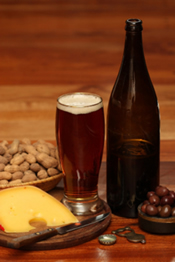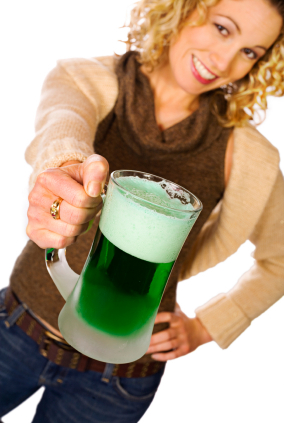Many men consider the world of beer to be a masculine realm, and these many men are increasingly more mistaken. With the variety and taste sensations offered by the golden age of microbrew, many women are becoming more acquainted with the pleasures of drinking beer. In addition to the trend of women increasingly drinking beer, some medical studies have shown that, for women, drinking moderately can help fight high blood pressure and cholesterol.
 |
Although the beer market is still mostly a male demographic, beer analysts are realizing that up to 30 percent of the market is actually made up of female beer drinkers. As of 2005, London based research firm Datamonitor has reported that low carb and light beers are driving greater beer consumption in U.S. women. Some beer companies have even launched specific lines of beer to appeal to women, such as Heineken’s new malt cider Charli, and Poland’s Karmi. Beer advertisers are noticing this trend as well. A 30 percent market share cannot be ignored, and the public has already seen a shift in the content of beer ads.
Women are also drinking a lot of micro brewed beer. According to a National Restaurant Association survey, about half of women are ordering microbrews when eating out. Microbrewers must be even more aware of this trend in beer than industrial brewers.
For some women, it has been clinically proven that moderate drinking can have health benefits. Two studies published by the Archives of Internal Medicine and the American Journal of Clinical Nutrition support this claim in different ways. The first study found that younger women who drink an average of two to three alcoholic beverages weekly have a lower risk of having high blood pressure than those who do not drink. This study used 70,000 women aged between 25 and 42 years old. The study tracked the women’s health from 1989 until 2002, and found that women had a 14 percent less chance of having high blood pressure problems.
The second study, the one published by the American Journal of Clinical Nutrition, focused on older women, 51 of them, who were aged above 60 years old. The women’s diets were all strictly controlled. This study found that alcohol could lower cholesterol, but only if only one or two drinks were taken in a day. The women were given strict dietary plans, including either a zero, one, or two-drink quota per day. The health benefits showed up for the single drink group, but dropped off for the two-drink group.
With studies like these enhancing the trends already present in the category of women drinking beer, we can see that it is only more likely that this trend will continue.
But one Canadian study showed some slightly dismaying aspect for women drinking beer: "My study suggests that sober women who drink alcohol are less able to perceive facial symmetry when sober," said Dr Kirsten Oinonen, Dr. at Lakehead University in Canada,
"When sober, these women are worse at judging facial symmetry, and therefore may find less attractive men more attractive. Given that symmetry is associated with attractiveness of faces, my study does suggest the possibility that alcohol intoxication may decrease facial symmetry perception, and make people look more attractive."
It seems that scientists in Canada have found the technical term for the curious phenomenon commonly known as "beer goggles".




